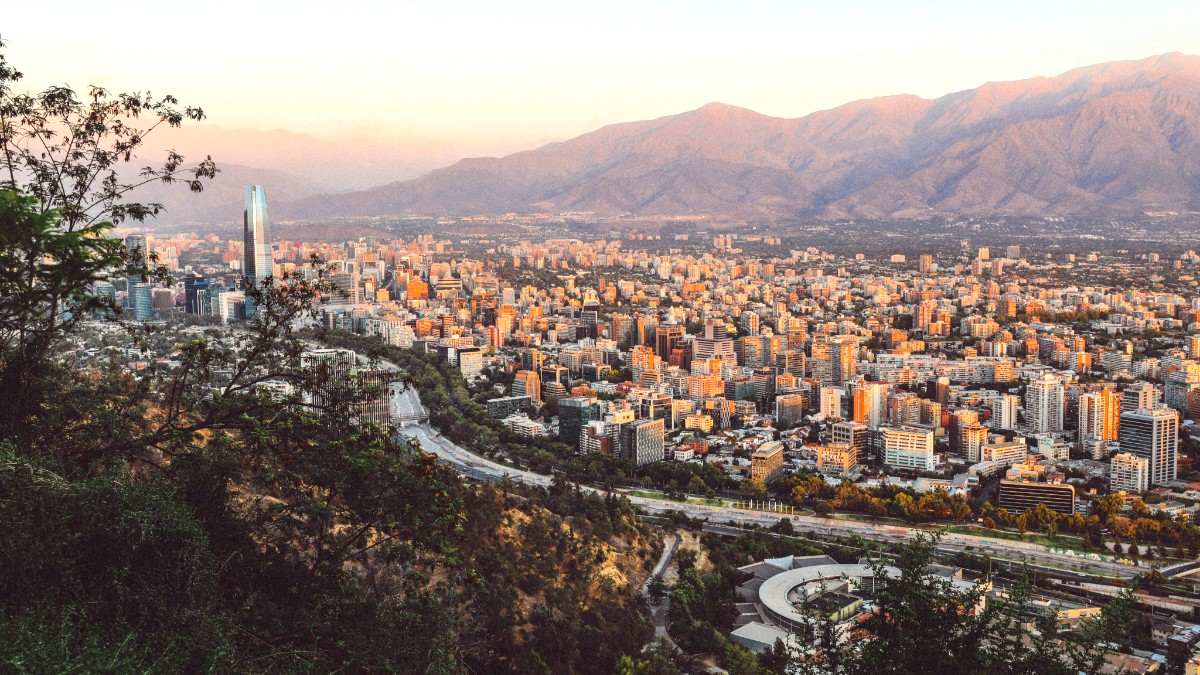
Chile
These places define Santiago and belong high on your list. From city views to historical sites, each landmark offers a glimpse into Santiago's identity.
The historical center has grand colonial architecture, landmarks, and busy commercial streets. Modern districts present sleek architecture, luxury shopping, and corporate headquarters.
Visit Centro Cultural La Moneda, located underground, for art exhibitions and cultural events.
Has a large Virgin Mary statue at its summit.
Founded in 1541 by Pedro de Valdivia.
A neoclassical building, seat of Chilean President.
Home to Museo Nacional de Bellas Artes and Parque Forestal.
Tallest building in South America, offers 360-degree views.
Santiago's museums explore art, history, and culture.
One of the oldest art museums in South America, in Parque Forestal. Collection features Chilean and international art.
Powerful museum documenting human rights violations during the military dictatorship (1973-1990). Near Metro Quinta Normal. Free entry. Audio guides are helpful.
Houses an extensive collection of pre-Columbian art and artifacts from across the continent. Downtown, near Plaza de Armas.
One of three house-museums of Nobel Prize-winning poet Pablo Neruda, in Barrio Bellavista. Quirky design reflects Neruda's personality.
cultural center with theaters, exhibition spaces, and libraries. Hosts contemporary performances and art exhibitions. Near Metro Universidad Católica.
Many museums offer free entry on specific days (often Sundays) or at certain times. Check websites in advance.
Main Catholic church of Santiago, on Plaza de Armas. Admire intricate architecture, altarpieces, and religious art. Dress respectfully.
Smaller, landscaped urban hill. Ornate fountains, statues, decorative staircases, and a small castle at its summit. Pleasant city views from the top. Free entry.
Picturesque neighborhood with European-style mansions, cobblestone streets, diverse architectural styles. Feels like stepping back in time. Good for leisurely strolls and photography.
Santiago's history is evident in its buildings and public spaces. These sites are a journey through time, from founding to modern heritage.
These locations tell the story of Santiago and Chile.
Even in a bustling city, Santiago offers access to beautiful parks and natural escapes. These green spaces and nearby natural wonders provide a refreshing contrast to urban exploration.
From sprawling urban parks perfect for relaxation and recreation to dramatic Andean canyons and world-renowned wine valleys, the natural beauty surrounding Santiago invites outdoor adventures and tranquil moments.
Santiago's urban parks are green havens within the city.
Beyond city limits, dramatic landscapes for day trips.
These charming, bohemian neighborhoods have cafes, independent shops, art galleries, and cultural centers.
Known for its nightlife, Bellavista is packed with bars, clubs, restaurants, and street art. Home to La Chascona.
Santiago has more to explore beyond the main tourist routes.
Massive flea market and second-hand market in Barrio Franklin. A genuine local experience. Visit on weekends. Be mindful of belongings.
Open-air sculpture park in Providencia, with works by Chilean artists along the Mapocho River. A tranquil spot for art lovers. Free entry.
Newer Metro stations are accessible. Older parts of the city have uneven sidewalks. Research specific accessibility if needed. Stick to well-lit streets at night.
Companies like Turistik operate hop-on-hop-off tour buses covering major attractions. Audio commentary is available.
Find Tour BusesTeleférico Santiago (cable car) and Funicular de Santiago both connect to Cerro San Cristóbal. Panoramic views and photo opportunities.
Book Cable Car TicketsFree walking tours (tip-based) are popular, departing from central plazas. Commercial tours, including food or historical tours, are also available.
Explore Walking ToursMany online resources offer printable maps and suggested routes for self-guided exploration of neighborhoods or themes.
Newer Metro stations and Red buses often low floors and ramps. Research specific attractions and routes beforehand for mobility needs.
Many museums in Santiago offer free entry on specific days (often Sundays) or at certain times.
The Virgin Mary statue atop Cerro San Cristóbal.
Moving around Santiago is simple thanks to its public transportation network and various private options.
Santiago boasts an efficient and extensive public transportation system, mainly its Metro (subway) and Red Metropolitana de Movilidad (Red) buses.
For convenience or when public transport is not suitable, taxis and ride-sharing apps are alternatives.
Car and bike rentals offer different ways to see the city.
Car rental best for day trips outside the city. Bicycle for short distances and specific neighborhoods.
Walking and cycling give intimate ways to experience Santiago, especially charming neighborhoods and green spaces.
Providencia & Las Condes feature wide sidewalks. Parks (Parque Forestal, Parque O'Higgins) have extensive paths.
Unique transport options combining sightseeing with travel.
Both cable car and funicular are iconic ways to ascend Cerro San Cristóbal.
Extensive coverage, fast, clean, efficient, reliable. Very crowded during peak hours; pickpockets are a concern.
Comprehensive citywide network, reaches areas Metro doesn't. Can be slow in heavy traffic; routes can be complex.
Convenient, transparent pricing (apps). Safety concerns with unmarked taxis. Confirm driver/vehicle details.